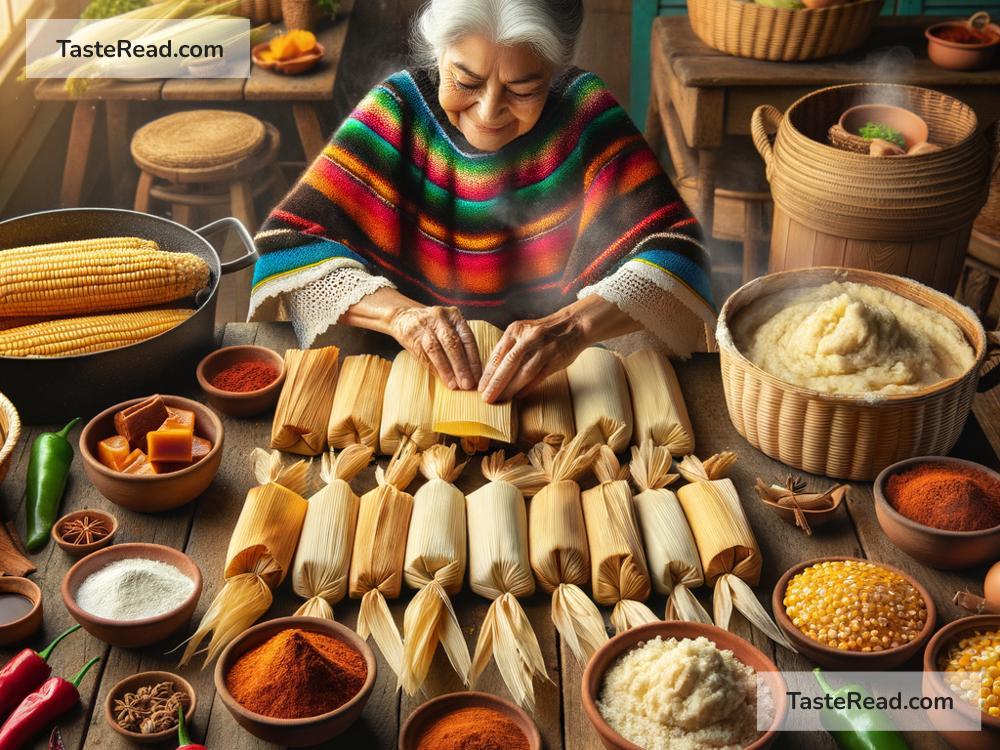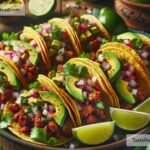The Story of the Mexican Tamale
The tamale is a delicious Mexican dish with a deep history that spans thousands of years. It’s more than just food; it’s a cultural symbol that connects people to Mexico’s ancient past and keeps traditions alive. Whether enjoyed during family gatherings, holidays, or sold on the streets, the tamale holds a special place in the hearts of many.
What Is a Tamale?
A tamale is a type of steamed corn dough, called “masa,” wrapped in a corn husk or banana leaf and filled with a variety of ingredients. These fillings can include meats like pork or chicken, vegetables, beans, chilies, or even sweet ingredients like fruits and chocolate. After it’s wrapped, the tamale is steamed until it becomes soft and flavorful. The husk or leaf is removed before eating, revealing the delicious treat inside.
Tamales come in many shapes, sizes, and flavors depending on the region of Mexico. Each town or family might have its own way of preparing tamales, making them even more special.
Where Did Tamales Come From?
The tamale is believed to have been created thousands of years ago by Indigenous peoples in Mesoamerica, which includes modern-day Mexico and Central America. Tamales date back to around 8000 BCE, making them one of the world’s oldest prepared foods.
The Aztecs, Maya, and other civilizations relied on tamales as an important part of their diet. Corn, or “maize,” was considered sacred and was one of their most important crops. They used corn to make masa, the foundation of tamales.
Tamales were portable, making them ideal for warriors, hunters, and travelers. Since they were wrapped in husks or leaves, tamales were easy to carry and didn’t spoil quickly. Early tamales were filled with things like turkey, fish, beans, or local fruits, depending on what was available.
Tamales and Rituals
Tamales weren’t just food; they were part of religious and cultural practices. Ancient ceremonies often included tamales as offerings to gods. For example, the Aztecs made special tamales without fillings to offer to their corn gods as a sign of thanks.
Some of these traditions still exist today. In Mexico, tamales are eaten during special holidays and celebrations, such as Christmas, Día de los Muertos (Day of the Dead), and Día de la Candelaria (Candlemas). On Día de la Candelaria, families gather to eat tamales, and the person who finds the hidden figurine in the Rosca de Reyes cake is responsible for hosting the tamale feast.
Tamales in Today’s Mexico
Even though tamales have ancient roots, they are still widely loved and eaten throughout Mexico and many other countries. Modern tamales come in hundreds of variations. For example:
- Tamales Verdes: Made with chicken and green salsa.
- Tamales Rojos: Filled with pork and red chili sauce.
- Tamales Dulces: Sweet tamales, often made with pink-colored masa and filled with fruits or raisins.
- Tamales Oaxaqueños: These are wrapped in banana leaves and usually have mole sauce, a rich and flavorful traditional Mexican sauce.
Different regions of Mexico have their own unique tamales. In Yucatán, people make tamales called “vaporcitos,” often stuffed with seasoned pork or turkey. The northern states of Mexico might use hearty fillings like beef or beans. And in southern Mexico, tamales are often larger and filled with spicy ingredients or seafood.
Tamales aren’t just found in kitchens or restaurants; vendors sell them on streets and markets, usually early in the morning or late in the evening. Many people enjoy buying tamales for breakfast, served with hot drinks like atole or champurrado, which are traditional corn-based beverages.
The Spread of Tamales Around the World
As Mexican immigrants traveled to different parts of the world, they took tamales with them. Today, tamales can be found not just in Mexico, but in the United States, Central America, and even countries as far away as the Philippines. In some places, different cultures have adapted the recipe, using local ingredients and techniques.
For example, in Guatemala, tamales may include rice in the masa, and in El Salvador, tamales are cooked with a thicker, more wet consistency. These variations highlight how tamales have evolved while still preserving their roots.
Tamales and Family Traditions
One of the most beautiful parts of tamales is the tradition behind them. Making tamales is often a family activity. During holidays or special events, families gather to prepare tamales together, sharing stories, laughter, and work. The process is labor-intensive, requiring hours of cooking, mixing masa, preparing fillings, and wrapping the tamales. But many people say the effort is worth it because it brings loved ones closer together.
Tamales represent more than sustenance; they symbolize love, togetherness, and tradition. When you eat a tamale, you’re not just tasting a meal—you’re experiencing a piece of history passed down over generations.
Conclusion
The humble tamale is much more than a dish. It’s a connection to the past, a piece of Mexican heritage, and a celebration of culture. From its ancient origins to its modern-day popularity, the tamale has stood the test of time. Whether filled with spicy meat or sweet fruits, wrapped in corn husks or banana leaves, tamales continue to bring joy to people around the world. So the next time you enjoy a tamale, take a moment to appreciate the rich history and traditions behind this iconic Mexican food.


